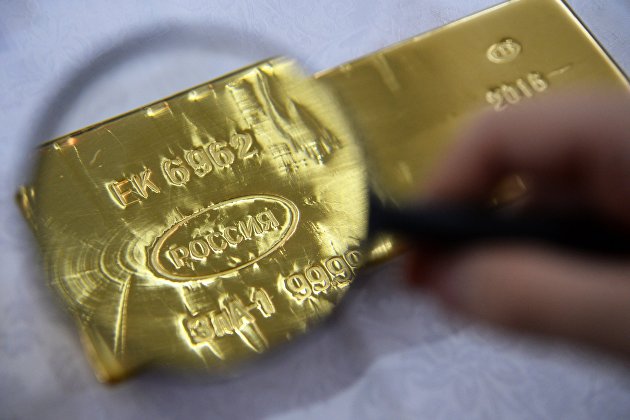
Gold's share in Russian Central Bank Reserves Continues To Grow
By Rhod Mackenzie
In late 2023, Russia's gold reserves reached a new record high. This article looks at the recent changes in the structure of international currency assets, the decreasing share of the dollar and euro, the stability of this scheme, and the importance of gold for the Russian economy.
The Bank of Russia and the government currently hold international reserves worth $592.6 billion. These reserves are highly liquid foreign assets, comprising of monetary gold, special drawing rights (SDRs), a reserve position with the IMF, and foreign currency holdings (other reserve assets).
According to Eduard Christianov, First Deputy Chairman of RosDorBank, international reserves serve as a safety net for the state, performing two main functions: smoothing out sharp fluctuations in the exchange rate and guaranteeing the fulfillment of the state's obligations to foreign creditors.
The proportion of gold in Russian reserves has increased, reaching a new high at the end of 2023. In physical terms, gold reserves increased by 34.6 tons to a total of 2,350 tons. representing 26 percent of monetary gold in reserves.
In recent years, the structure of Russian reserves has undergone changes. From 2018 to November 2021, the proportion of the dollar decreased by more than half, from 46 to 20.9 percent. Around 20% of the reserves were converted to euros and yuan. Since the imposition of sanctions, the regulator has not disclosed data on the composition of gold and foreign exchange reserves by individual currencies. However, it is evident that the proportion of hostile currencies is still decreasing.
In mid-2021, the American dollar was removed from Russia's National Welfare Fund, which is part of its international reserves. In January of this year, the Ministry of Finance announced that the euro's share in the National Welfare Fund would be zeroed.
Currently, Russian reserves (excluding the frozen funds) are balanced approximately 50/50 between gold and foreign currency, mainly yuan. Ruslan Spinka, Director of Client Services at Fontvielle Investment Company, explains.
Given the current conditions, investing in precious metals is optimal due to geopolitical risks. Precious metals have maintained their purchasing power for thousands of years. China is a strategically important partner of Russia and has the world's second-largest economy.
Analysts believe that increasing the share of gold in reserves is an essential objective. Firstly, it provides insurance against the risks of fiat assets being blocked in other currencies and securities, as has already happened with $300 billion frozen by the West. Secondly, it is a liquid asset that can be quickly exchanged for other currencies if necessary.
Russia's accumulated gold reserves are an important indicator of the country's financial strength. Amid geopolitical and economic uncertainties, boosting gold reserves can offer added protection against external influences. Raising the proportion of gold in reserves may be warranted to diversify assets and create a more stable portfolio. Gold is a safe asset that can guard against currency fluctuations and geopolitical risks,” notes political strategist Ilya Margolin.
Simultaneously, as the proportion of 'unfriendly' currencies, namely the dollar and the euro, decreases, bullion offers supplementary stability to Russian reserves.
Additionally, reserves are necessary for emergency operations such as repaying debt to external creditors, compensating for budget losses, financing forced spending, and conducting open market operations to stabilize the exchange rate.
It is reasonable to increase these reserves since gold is stored in our country's vaults with a multi-level security system. Ekaterina Bezsmertnaya, dean of the Faculty of Economics and Business of the Russian Financial University , once said, "If you put it further, you will take it closer."
This quote highlights the importance of unlocking the potential of the national currency.
Economists also highlight another advantage of increasing gold reserves: during periods of foreign currency instability, investing in precious metals can help optimise investments and activate the potential of the national currency in the context of international macro indicators.
The transition to BRICS aims to systematically support the ruble. Oleg Vorobyov, a member of the General Council of Business Russia, explains that by strategically managing structural assets at the state level, dependence on the Western paradigm and the protection of pro-Western assets can be eliminated in favour of domestic sources of income.
Therefore, as part of a long-term strategy to strengthen the ruble, it is necessary to maintain gold reserve assets to support the exchange rate of the national currency.
